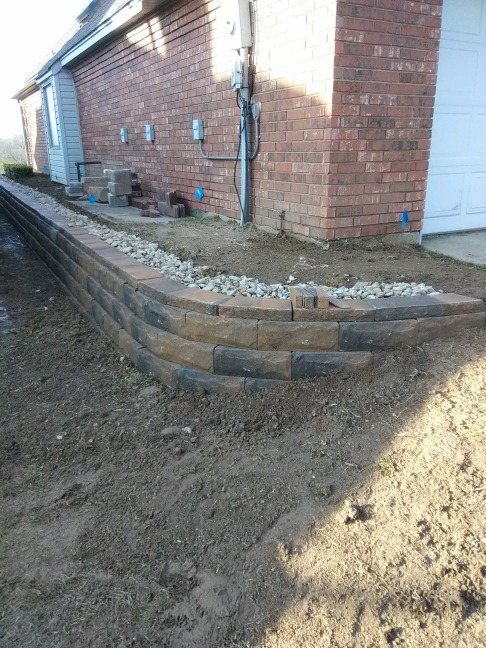Retaining walls serve several purposes in landscaping, such as preventing soil erosion, creating level areas for planting or recreation, and enhancing the overall aesthetic appeal of your property. However, an often-overlooked aspect of building retaining walls is the importance of proper drainage. In this blog post, we’ll discuss the critical role of drainage in constructing retaining walls and offer tips on how to ensure your retaining wall remains structurally sound for years to come.

The Importance of Drainage in Retaining Walls
Prevents Hydrostatic Pressure Buildup
One of the primary reasons drainage is essential in retaining walls is to prevent the buildup of hydrostatic pressure. When water accumulates behind a retaining wall, it creates pressure that can compromise the wall’s structural integrity, eventually leading to failure. Proper drainage systems help to alleviate this pressure by directing water away from the wall.
Reduces Soil Erosion
In addition to preventing hydrostatic pressure, proper drainage also helps reduce soil erosion behind the retaining wall. By directing water away from the wall, drainage systems prevent soil particles from being washed away, maintaining the wall’s stability and support.
Protects Landscaping Features
Poor drainage can lead to water pooling and oversaturation, which can damage plants and other landscaping features near the retaining wall. A well-designed drainage system helps to protect your landscaping investment by ensuring that water is directed away from sensitive areas.
Drainage Solutions for Retaining Walls
Backfill with Permeable Materials
One of the simplest ways to ensure proper drainage behind a retaining wall is to backfill with permeable materials, such as gravel or crushed stone. These materials allow water to pass through easily, reducing the risk of hydrostatic pressure buildup.
Install a Drainage Pipe
For added protection, consider installing a drainage pipe, also known as a French drain, behind the retaining wall. This perforated pipe, typically placed at the base of the wall, collects water and directs it away from the wall, preventing hydrostatic pressure and reducing soil erosion.
Use Drainage Geotextiles
Drainage geotextiles, such as landscape fabric or filter fabric, can be used to separate soil from gravel or crushed stone backfill. This prevents soil particles from clogging the permeable backfill material, ensuring that water can drain freely.
Maintain Proper Slope
When constructing your retaining wall, it’s crucial to maintain a proper slope or grade to ensure water drains away from the wall. Generally, a slope of 1% to 2% is recommended to facilitate adequate drainage.
The role of drainage in building retaining walls cannot be overstated. Proper drainage is essential for preventing hydrostatic pressure buildup, reducing soil erosion, and protecting your landscaping features. By implementing the drainage solutions discussed in this blog post, you can ensure the longevity and structural integrity of your retaining wall. For professional assistance with your retaining wall project, contact Accurate Lawn Leveling today!
